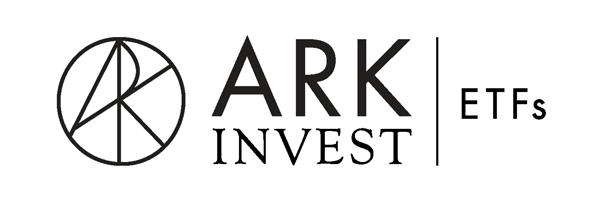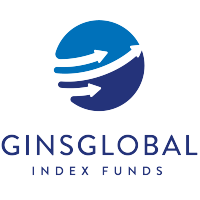Cathie Wood’s ARK Investment Management was the archetypal success story of pandemic era growth and speculative investing but ETFs in Europe have a few of their own answers to the multi-sector innovation question.
Wood’s flagship ETF, the Ark Innovation ETF (ARKK), had a quiet three years following its launch in October 2014. Over the last year though, it has gained a cult following after booking returns of 313.7% between its low point during the height of volatility last March and its all-time high this February.
According to data from ETFLogic, ARKK gathered $10.2bn inflows over the 12 months to 18 October, flirting with the $25bn assets under management (AUM) mark during some points in the first half of 2021 and helping push ARK Invest to eleventh in the global ETF issuer rankings.
Unfortunately, questions surrounding over-concentration in small-cap companies and a market rotation away from technology-focused growth stocks towards cyclical sectors have both caused a sea change for Wood’s line-up of prominent ETFs.
This was reflected in a 13F regulatory filing in August which revealed Scion Asset Management, founded by ‘Big Short’ investor Michael Burry had taken out short positions against 235,000 shares in ARKK at the end of H1.
Over the last six months, the ETF has returned -2.8% but has fallen a considerable 25.3% since its high on 12 February. Furthermore, investors have yanked $2.6bn assets in six months, as at 18 October.
Coming back to this side of the pond, Europe is yet to see a true ARKK equivalent overlaying a multi-sector, future themes ETF with active management. However, over the past three years, some index-tracking, rules-based strategies have attempted to offer coverage to the future disruptors space.
1. Lyxor MSCI Disruptive Technology ESG Filtered UCITS ETF (DTEC)
First, we have the largest of the three ETFs on our list, the $335m DTEC ETF from Lyxor.
With a total expense ratio of 0.45% and tracking the MSCI ACWI IMI Disruptive Technology ESG Filtered index, the product looks at 186 stocks involved in areas such as 3D printing, the ‘Internet of Things’, cloud computing, fintech, healthcare, robotics, clean energy and cybersecurity.
Stocks are identified as eligible using natural language processing, which identifies keywords of theme-related products, services and concepts that help determine what proportion of a company’s revenue is derived from disruptive tech subsectors.
The suitability of the underlying index is reviewed annually by an MSCI thematic industry expert. It is also filtered using MSCI ESG rating and controversy scores and finally weighted based on one-year sales growth, return on invested capital and percent of sales spent on research and development and capital expenditure.
DTEC launched in March last year and is the best-performing of our three ETFs over the past year returning 26%, as at 18 October, and 8.7% over the last six months.
2. HAN-GINS Tech Megatrend Equal Weight UCITS ETF (ITEK)
Next is the oldest-serving and most exotic of our European representatives, the $121m ITEP from GinsGlobal and HANetf.
ITEK carries a higher fee of 0.59% though this is still comfortably shy of the 0.75% TER attached to ARKK.
Replicating the Solactive Innovative Technologies index, the ETF offers exposure to 109 stocks in the robotics and automation, cloud computing and big data, cybersecurity, future cars, genomics, social media, blockchain and digital entertainment industries.
ITEK sets itself apart by being equally weighted which prevents it from making an oversized bet on just a few of the constituents in its basket. The ETF is also the least US-biased on our list with a 54.2% exposure, giving it a more substantively global coverage.
Launching in October 2018, the product has seen the vast majority of its assets ($102m) arrive within the last 12 months. It has returned 25% over the past year and 5% over the last six months.
3. Invesco NASDAQ Next Generation 100 UCITS ETF (EQJS)
Finally, the $33m EQJS is the newest of our list having launched in March this year.
Not accidentally, EQJS is related to its very popular big brother, the $7.4bn Invesco EQQQ Nasdaq-100 UCITS ETF (EQQQ). Whereas EQQQ tracks the 100 largest Nasdaq-listed non-financial companies, the “Next generation 100” rendition tracks the performance of the largest 100 companies outside of the Nasdaq 100.
In effect, these companies make up the middle tier of the Nasdaq stock market and include US domestic – an 87.5% allocation – and international companies in sectors including technology, health care, communication services, consumer discretionary and industrials.
Rebalancing quarterly, EQJS’s underlying index’s mid-cap focus means it excludes run-of-the-mill FAANG stocks which can be found in almost all global and US core equity strategies. Its top ten weightings include Fortinet, ZScaler, Roku and Datadog, the last of which it has in common with DTEC.
The ETF has returned 6.7% over the last six months and 10.7% since it began trading on 26 March. Interestingly, this is roughly half of the 19.7% returned by EQQQ during the same period.
Where EQJS redeems itself is with its fee of 0.25%, which is not only the lowest of our list and a third of ARKK’s TER, but is also five basis points below the large cap Nasdaq counterpart, EQQQ.
Further reading










